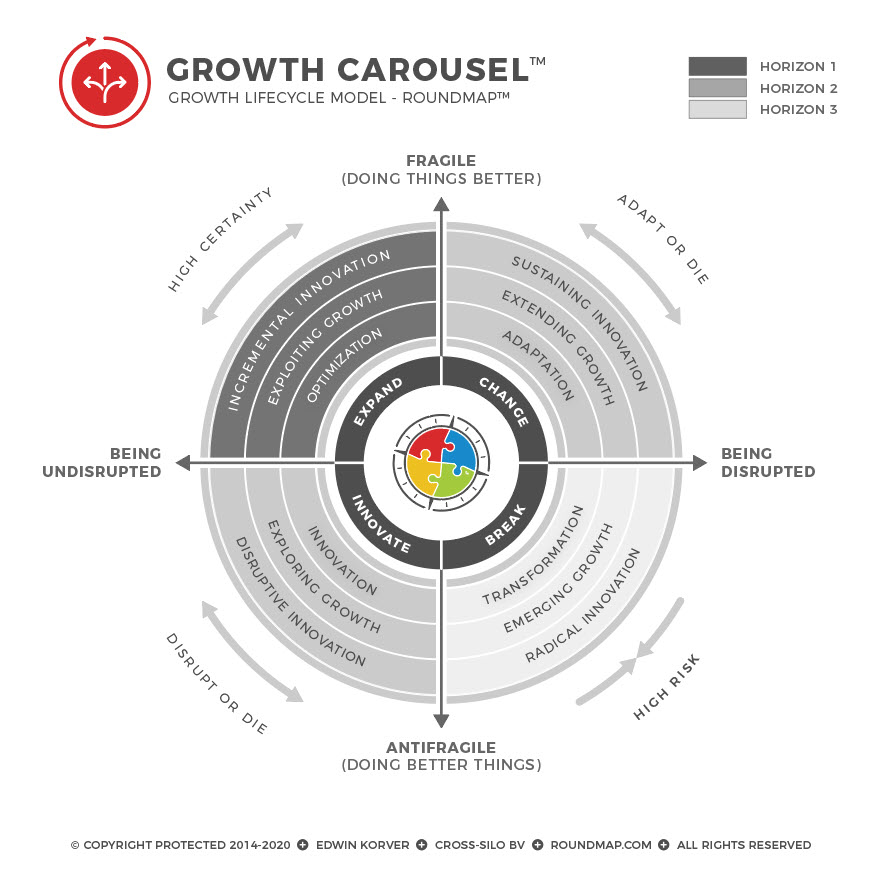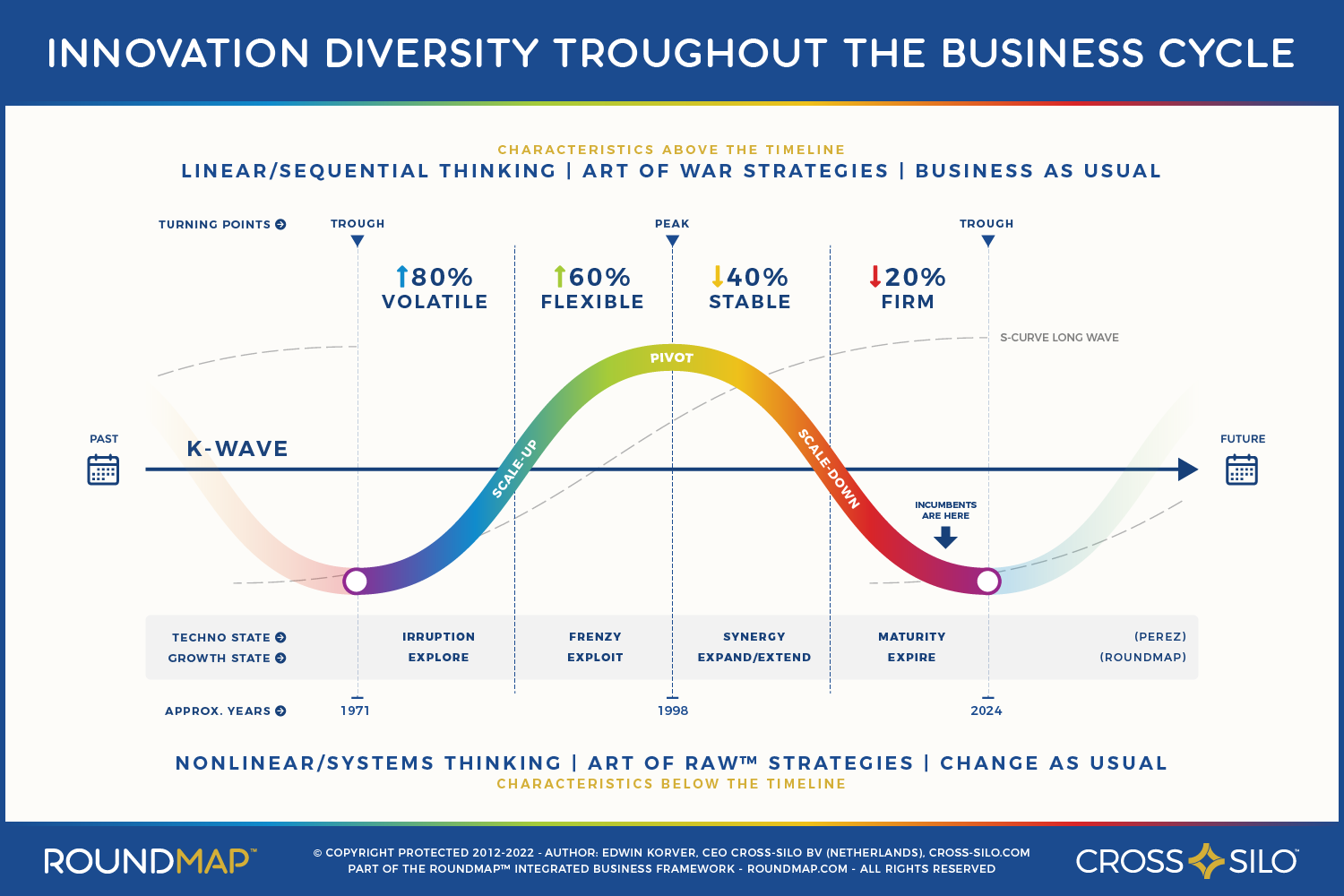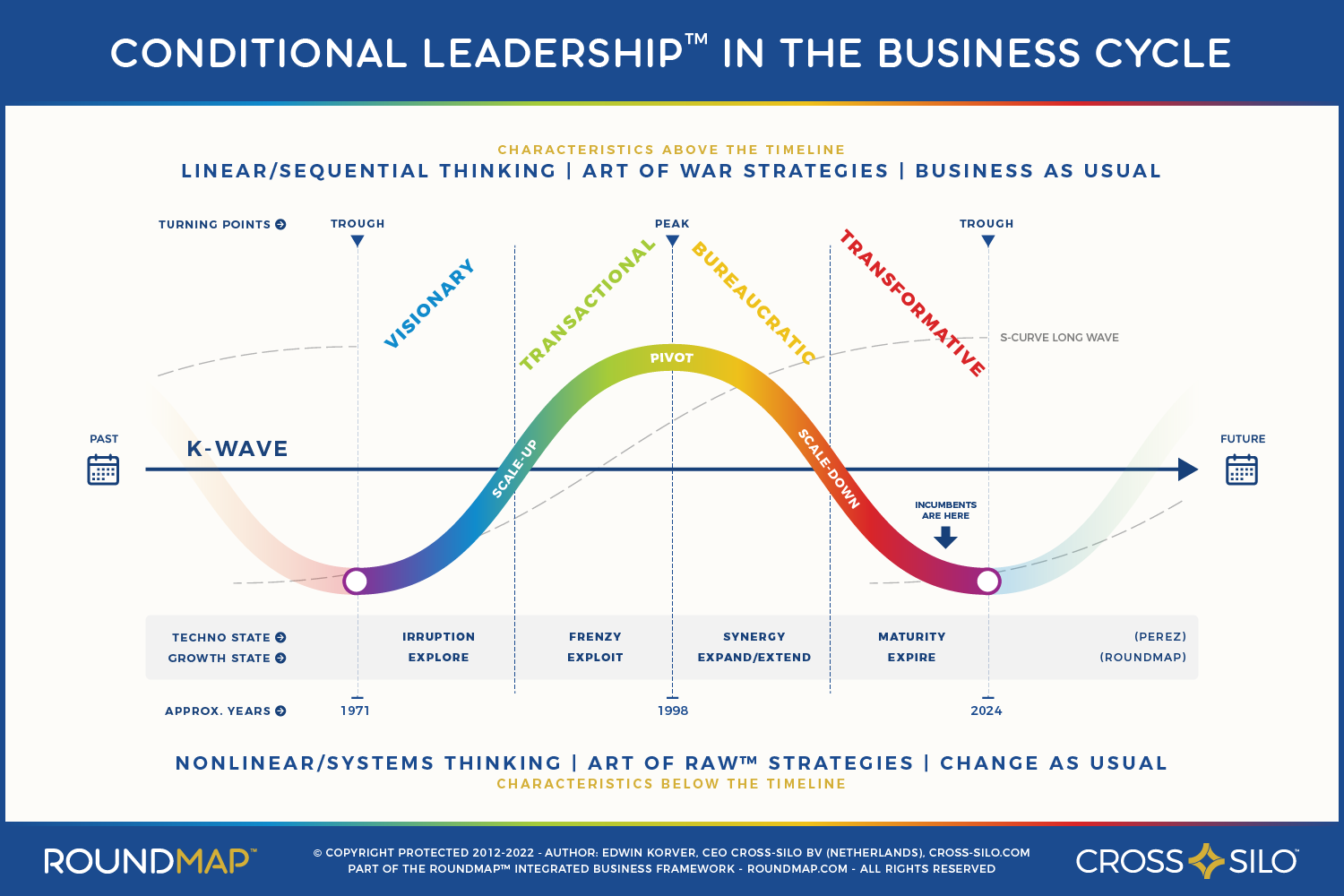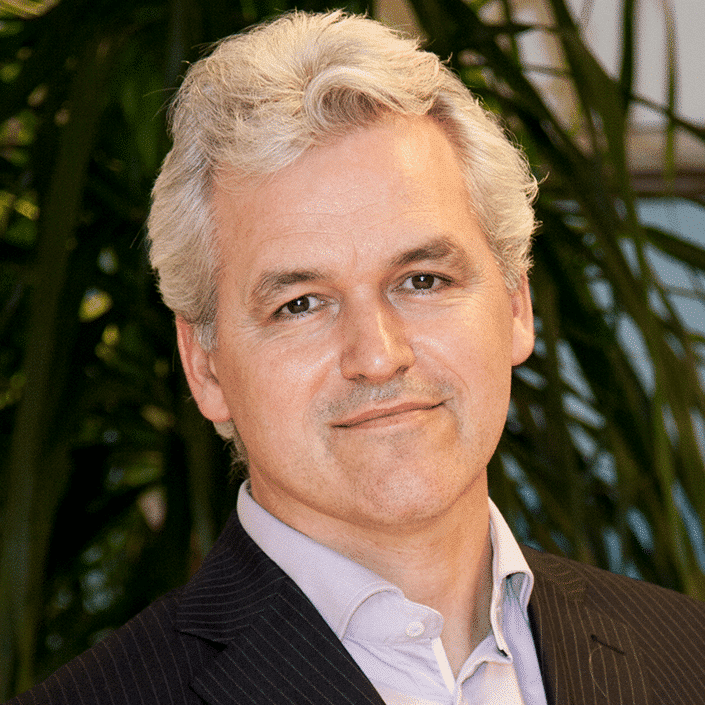In How to Achieve Sustained Growth, we argued that growth is essential for any company. Without growth, revenue will stagnate, innovations will halt, employee and customer turnover will rise, market share will decline, and so on. In this post, we’ll discuss ways to develop holistic mastery to deal with the following:
- Navigating Business Cycles
- Developing Lifecycle Awareness
- 360° Mastery Strategies for Holistic Growth
- Reacting Impulsively versus Responding with Insight
- Navigating The Adjacent Possible
- Balancing Between Exploiting and Exploring
- Practicing Conditional Leadership
1. Navigating Business Cycles
Understanding the concept of business cycles is crucial for leaders aiming to navigate the complexities of business growth effectively. This concept recognizes that economies undergo various business cycles, each influencing the market conditions and operational landscapes businesses must adapt to. Mastering the dynamics of these recurring business cycles is essential for strategic planning, as it enables organizations to anticipate changes, leverage opportunities, and mitigate risks associated with each phase of the cycle.
From the vast spans of the Empire cycle to the nuanced shifts of the political cycles, being attuned to these patterns allows leaders to make informed decisions, align strategies with economic realities, and plan for sustainable growth. Recognizing and responding to these cycles is not just about survival; it’s about thriving by turning challenges into stepping stones for advancement.
Some of the business cycles to consider are:
- The political cycles ─ recurring every 2-4 years.
- The inventory cycle ─ Kitchin, recurring every 3-5 years.
- The short-term debt cycle ─ recurring every 5-7 years.
- The fixed-investment cycle ─ Juglar, recurring every 7-11 years.
- The infrastructural investment cycle ─ Kuznets, recurring every 15-25 years.
- The long-wave business cycle ─ Kondratieff, recurring every 35-66 years.
- The Long Term Debt Cycle ─ recurring every 50-75 years.
- The Empire Cycle or Big Cycle ─ recurring every 250 years.
Business Cycle Mastery emphasizes the need to understand that businesses navigate through various overarching cycles that significantly shape market conditions, often outside a company’s influence. This concept underlines the importance of businesses being adaptable and responsive to the macroeconomic and technological trends that impact their operations and strategic planning.
K-Wave: The Longwave Technology Cycle
Considering technology’s critical role in driving economic growth, especially amid a digital revolution, we posit that the Kondratieff business cycle, also known as the K-wave, is particularly significant to watch.
Arguably, the 5th K-wave started between 1974 and 1982, pivoting around 2001-2009. Renowned economist Joseph Schumpter’s analysis of the K-wave suggested that the waves are getting shorter and that the current wave will end near 2020.
However, the pandemic may have interfered with this projection, intensifying the transition. While we can only be sure in hindsight, we might pass through the cycle’s depth as we speak.
The accompanying figure outlines strategies for managing growth during a downturn:
2. Developing Lifecycle Awareness
Understanding the internal and external factors impacting growth is essential for leadership. For example, our mission might be at risk if we struggle to attract the necessary talent for business transformation. While we may not have control over the availability of skilled professionals, we can enhance the attractiveness of the job by improving working conditions.
Leadership is tasked with learning from, adapting to, mitigating, and potentially benefiting from these conditions, events, and cycles. This understanding has prompted us to distinguish four transitional lifecycles to guide business ventures through their evolution:
- The Venture Lifecycle – This focuses on the journey of a business from its inception through the various stages of its development, emphasizing the challenges and opportunities unique to each phase.
- The Product Lifecycle – This tracks the progression of a product from its introduction to the market to its growth, maturity, and eventual decline, guiding strategies for innovation, marketing, and adaptation.
- The Customer Lifecycle – This outlines the stages of a customer’s engagement with a business, from initial awareness to loyalty and advocacy, highlighting the importance of customer satisfaction and retention strategies.
- The Growth Lifecycle – This describes the phases of business expansion, identifying key growth drivers, potential pitfalls, and strategies for sustainable development.
By mastering these lifecycles, leadership can better navigate the complexities of business growth in a dynamic and changing environment.
3. 360° Mastery Strategies for Holistic Growth
Rooted in the essential pillars of RoundMap — marketing, sales, service, and customer success — and guided by the profound strategic cornerstones of strategy, vision, mission, and purpose, we present eight strategies for mastery. These strategies are designed to weave a cyclical tapestry of application, learning, and adaptation. Beginning with articulating the business’s essence and culminating in its continual reinvention, this journey ensures perpetual growth and evolution.
- Strategic Foundation Mastery
- Operational and Financial Excellence Mastery
- Innovation and Technology Mastery
- People, Culture, and Leadership Mastery
- Relationship, Communication, and Brand Mastery
- Sustainability, Social Impact, and Global Engagement Mastery
- Entrepreneurship, Value Creation, and Future Workforce Mastery
- Learning, Development, and Innovation Mastery
These categories encapsulate the comprehensive framework for achieving sustainable and equitable long-term success in business. More information can be found here.
4. Reacting Impulsively versus Responding with Insight
Choosing to respond rather than react is the essence of mastery, as it embodies thoughtful, deliberate action aligned with long-term goals and values. Responding involves a comprehensive evaluation of a situation, leveraging both conscious and unconscious awareness to make decisions that consider the well-being of all stakeholders and the broader implications.
This approach ensures actions harmonize with one’s core values and promotes sustainable solutions and learning opportunities. In contrast, reactions are immediate, often driven by instinct or emotion, and lack consideration of the longer-term consequences.
Therefore, responding is preferred because it leads to more thoughtful, effective, and holistic outcomes, fostering growth, adaptation, and continuous improvement.
5. Navigating The Adjacent Possible
The concept of the “Adjacent Possible” offers a fascinating lens through which to view progress and innovation, as first explored by Stuart Kauffman in his studies on biological evolution. Kauffman delved into the origins of order and the dynamics of self-organization across complex adaptive systems—ranging from the natural world, like ecosystems, to human constructs, such as cities, economies, and technologies. He proposed how “the actual,” or the current state of any system with its myriad components and connections, ventures into the “adjacent possible.” This realm encompasses all potential opportunities beyond the present system’s boundaries, waiting to be integrated and transformed into new system components, thereby expanding the system’s scope and capabilities.
Consider the case of Kodak as an illustrative example of growing awareness and missed opportunities. Despite its dominant position in the film industry, Kodak’s market value plummeted by 75% in just a few years, blindsided by direct competitors and the digital revolution. The advent of smartphones and social networks, platforms like Flickr and Instagram, shifted consumer behavior from printing to sharing photos digitally. This shift to the digital sharing of photos unveiled an adjacent possibility that Kodak failed to anticipate, leading to a seismic shift in the consumer photography market.
In a TED talk, scientist Vittorio Loreto expanded on this concept, presenting a formula for navigating the adjacent possible. He noted that systems often balance at a crossroads: the choice between exploiting existing resources and exploring new possibilities. His research suggests that, on average, systems dedicate 80% of their focus to exploitation and only 20% to exploration.
This exploration of the adjacent possible highlights the importance of recognizing and seizing the latent opportunities that progress brings. It underscores the need for leaders to cultivate a heightened awareness and readiness to adapt, ensuring that their strategies respond to the current landscape and embrace the potential for future innovation and growth.
6. Balancing Between Exploiting and Exploring
Loreto’s mathematical equation for the adjacent possible confirms that during the final phase of the business cycle, a business typically spends about 80% of its resources on defending ongoing business and a mere 20% on discovering new business ventures. However, it should be noted that while most technologies of the seventies and eighties are maturing, 20% will not be enough.
7. Practicing Conditional Leadership
What implications does this understanding hold for leadership? We believe leadership styles must adapt to navigate conditions most effectively and dynamically. While Hersey’s Situational Leadership® model emphasizes tailoring leadership to individual needs, our approach extends to identifying the optimal corporate leadership style within a specific period, considering both the internal and external challenges a business faces.
Thus, Conditional Leadership revolves around selecting the most suitable corporate leadership approach based on the prevailing internal and external circumstances. This decision-making process might be influenced by various cycles, such as the venture lifecycle, growth lifecycle, or broader economic cycles, along with unique events or conditions like the COVID-19 pandemic. Reflecting on how these extraordinary conditions have necessitated adjustments in leadership style can provide valuable insights into the practice of Conditional Leadership.
More on Conditional Leadership can be found here.
Author
-
Edwin Korver is a polymath celebrated for his mastery of systems thinking and integral philosophy, particularly in intricate business transformations. His company, CROSS-SILO, embodies his unwavering belief in the interdependence of stakeholders and the pivotal role of value creation in fostering growth, complemented by the power of storytelling to convey that value. Edwin pioneered the RoundMap®, an all-encompassing business framework. He envisions a future where business harmonizes profit with compassion, common sense, and EQuitability, a vision he explores further in his forthcoming book, "Leading from the Whole."
View all posts

![Cyclical Pathways to Mastery: Navigating Conditions for Growth and Leadership 1 Diagram_Kondratieff_wave[1]](https://roundmap.com/wp-content/uploads/Diagram_Kondratieff_wave1.png)
![Cyclical Pathways to Mastery: Navigating Conditions for Growth and Leadership 2 ROUNDMAP_Slide_Mastering_Business_Cycles_Copyright_Protected_2021[1]](https://roundmap.com/wp-content/uploads/ROUNDMAP_Slide_Mastering_Business_Cycles_Copyright_Protected_20211-1.png)
![Cyclical Pathways to Mastery: Navigating Conditions for Growth and Leadership 3 ROUNDMAP_Framework_Business_Carousel_Copyright_Protected[3]](https://roundmap.com/wp-content/uploads/ROUNDMAP_Framework_Business_Carousel_Copyright_Protected3.jpg)
![Cyclical Pathways to Mastery: Navigating Conditions for Growth and Leadership 4 ROUNDMAP_Framework_Product_Carousel_Copyright_Protected[1]](https://roundmap.com/wp-content/uploads/ROUNDMAP_Framework_Product_Carousel_Copyright_Protected1.jpg)
![Cyclical Pathways to Mastery: Navigating Conditions for Growth and Leadership 5 ROUNDMAP_Framework_Customer_Carousel_Copyright_Protected[1]](https://roundmap.com/wp-content/uploads/ROUNDMAP_Framework_Customer_Carousel_Copyright_Protected1.jpg)



